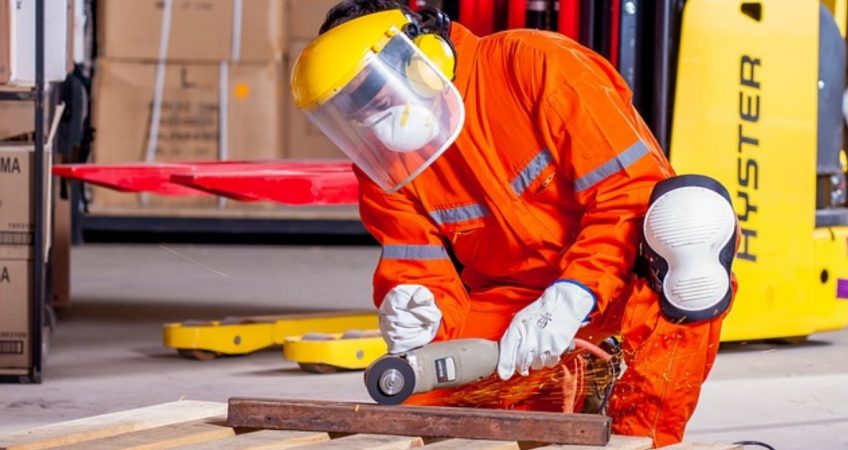Construction is an industry that is always going to involve a level of jeopardy. As an industry it tends to involve very heavy objects, working at height, and huge plant machinery – and as a result, construction bosses and workers need to be on their guard at all times.
Below, we’ll delve into seven of the most common health and safety hazards experienced on construction sites, and how your construction company can avoid them.
1. Excavation
Excavation is one of the most dangerous construction tasks, with the matter so potentially perilous you cannot afford to overlook it. Excavation involves the constant risk of collapse, and risks such as workers falling into holes that have been created. Finally, you have to consider the very real prospect of striking live power lines during the excavation process itself.
It is absolutely essential that all excavation sites are properly surveyed prior to any work beginning. Inspections should then continue on a regular basis during the work itself, ensuring the complete safety for all workings.
2. Working At Heights
While excavation may be the most dangerous single task construction workers face, there’s no doubt that working at height is a continual risk. Falls can be lethal, which is why health and safety measures in this area are crucial.
To avoid this risk, it’s important to consult with a health and safety expert. They will be able to advise you on the right safety equipment, as well as assess scaffolding construction and safety measures. This will ensure that all workers feel safe and confident, no matter how high above the ground they are working.
3. Fire
Construction sites will always be liable to fires, which is why proactively dealing with this issue is an absolute essential. Fires can be difficult to control when they get going, which is why the majority of your health and safety work in this regard should be preventative.
You’ll need to ensure that the site goes through a thorough risk assessment. When this is complete, you’ll need to ensure that access to dangerous and flammable substances is strictly controlled; such items should only be handled by workers who are qualified to do so.
You’ll also need a provision for what will happen should a fire start, such as established fire safety drills and fire-fighting equipment.
4. Electricity
Electricity is a wonderful thing that has allowed civilisation to evolve in the most wonderful ways, but on a construction site, it’s a big hazard. From the risk of small shocks to the potential for fatalities, the potential for electrical issues is exponential.
The key to managing the risk of electricity is proper usage at all times. All workers should be drilled to follow basic safety tips, such as: don’t overload sockets; label and identify all cables; and remove all trailing cables as quickly as possible.
5. Noise
Working with heavy machinery is part and parcel of life on a construction site, but it’s important to take note of the potential risks involved with its operation. Top of the list of risks is the potential for hearing damage, especially from extremely loud construction equipment such as pneumatic drills.
Avoiding this issue is simple: all workers should wear a pair of ear defenders when close to loud noises. This is an absolute essential, so ensure every worker has a pair of ear defenders available and insist upon their usage.
6. Collisions
When large plant machinery is moving around a site, the risk of collisions is fairly intense. Given both the health and safety risk and the risk to productivity if machines sustain damage, this is obviously an area that requires full investigation.
There are numerous strategies you will need to use in order to prevent collisions from becoming an issue at your site.
The first is the implementation of speed limits, which should be adhered to at all times.
Secondly, you have to carefully plan routes to ensure that all vehicles are able to move freely, and ensure that all routes are clearly marked and obvious to those moving on foot.
7. Hand Arm Vibration Syndrome
Hand Arm Vibration Syndrome (commonly abbreviated to HAVS) is a potential risk for any worker who handles power tools, and particularly tools that vibrate. The endless vibration from drills and ground working equipment can damage the blood vessels of the worker’s arm, causing severe pain.
The key to preventing HAVS is to use the appropriate safety equipment when handling tools that vibrate. Additionally, all equipment should be well maintained, as badly-maintained tools can vibrate excessively and increase the risk of HAVS.
After reading the above, you’re fully aware of the potential risks found on a construction site – and you know how to avoid them too. We hope you found this important information useful.
